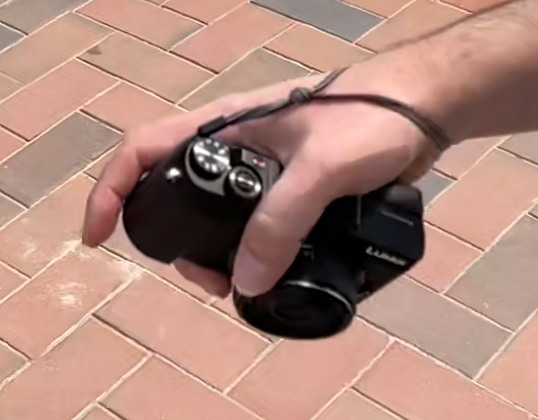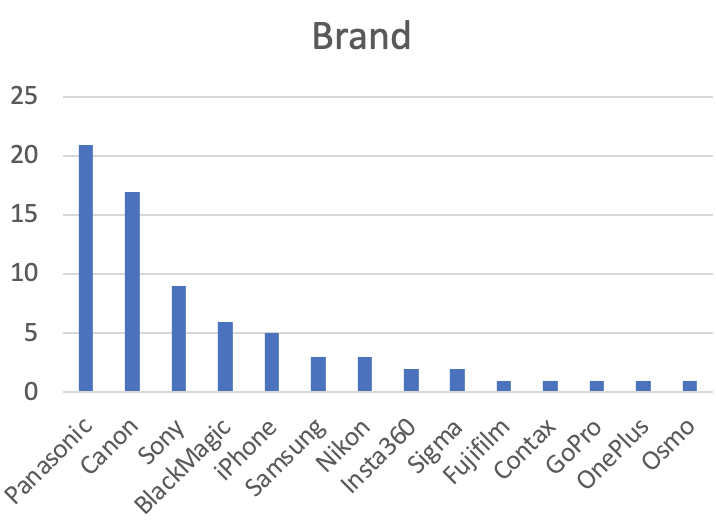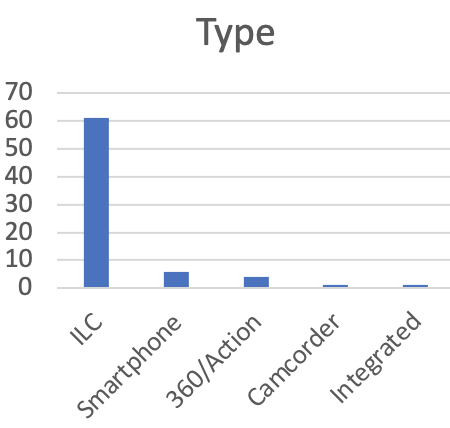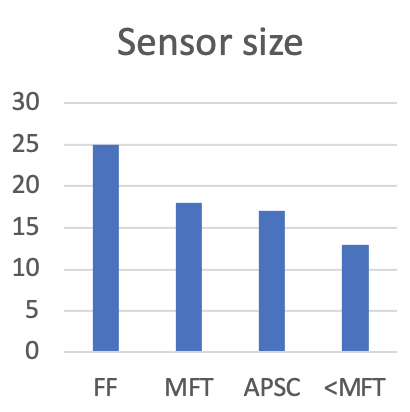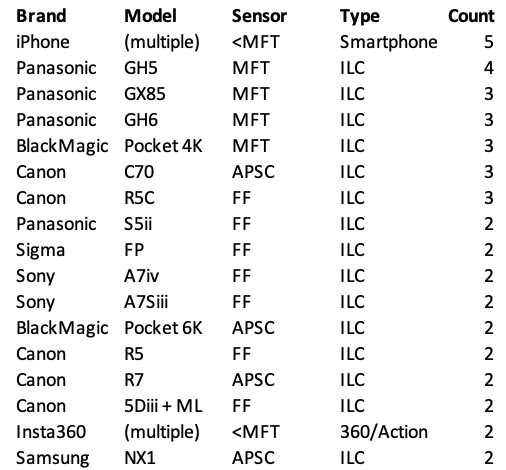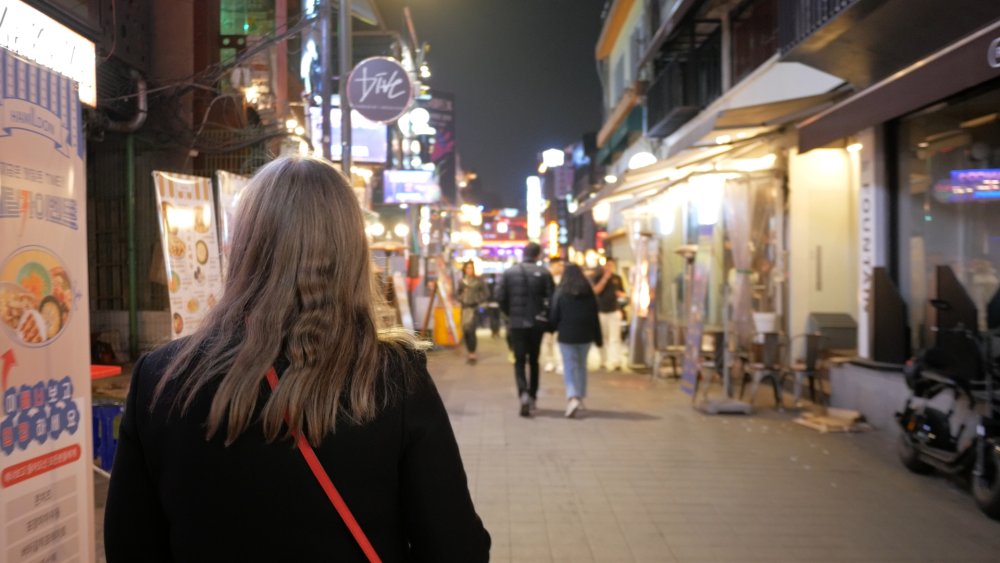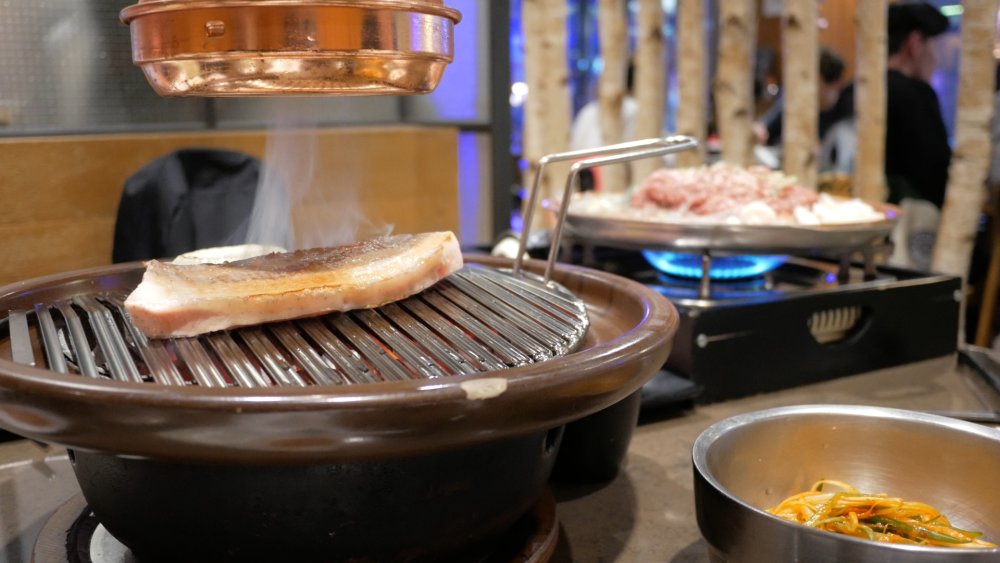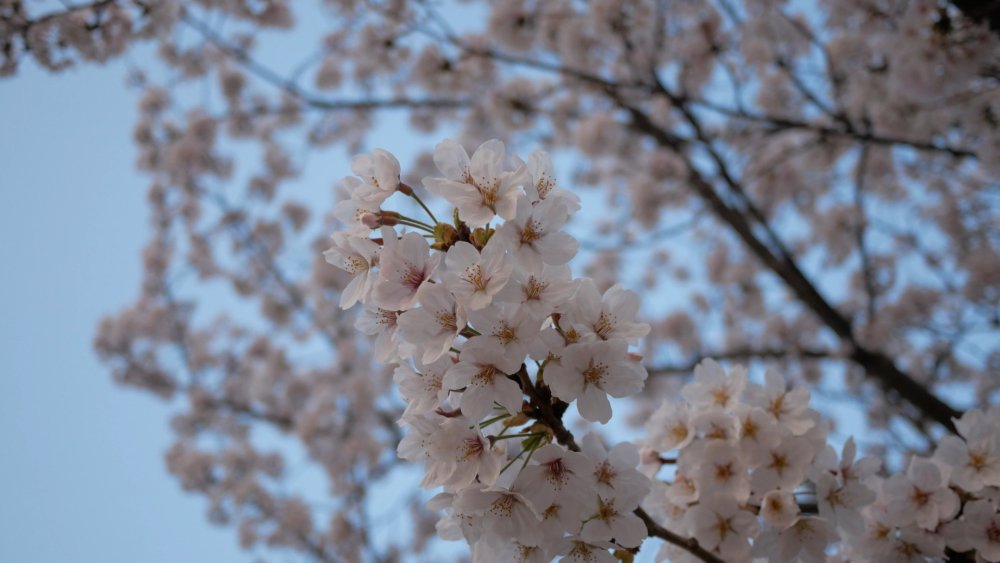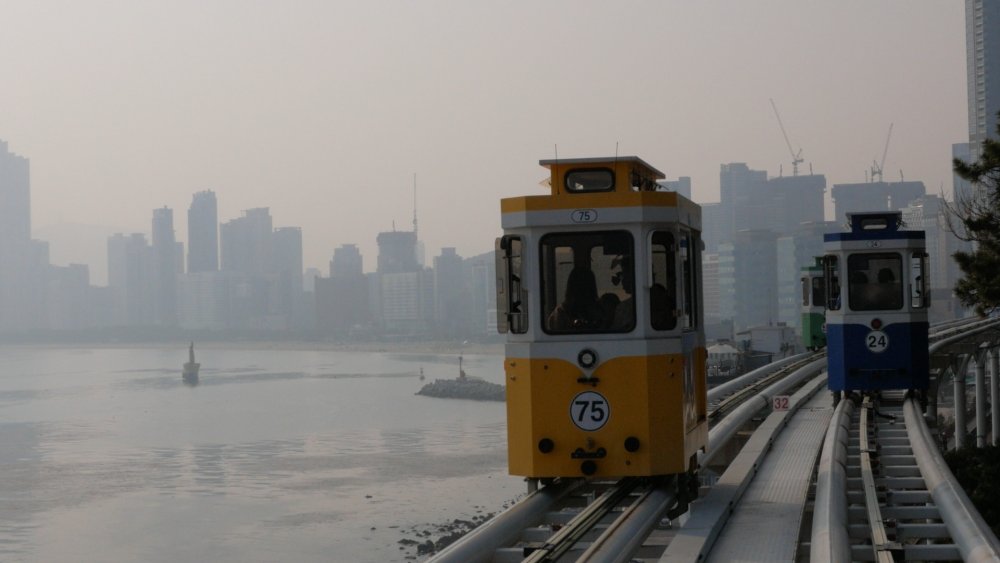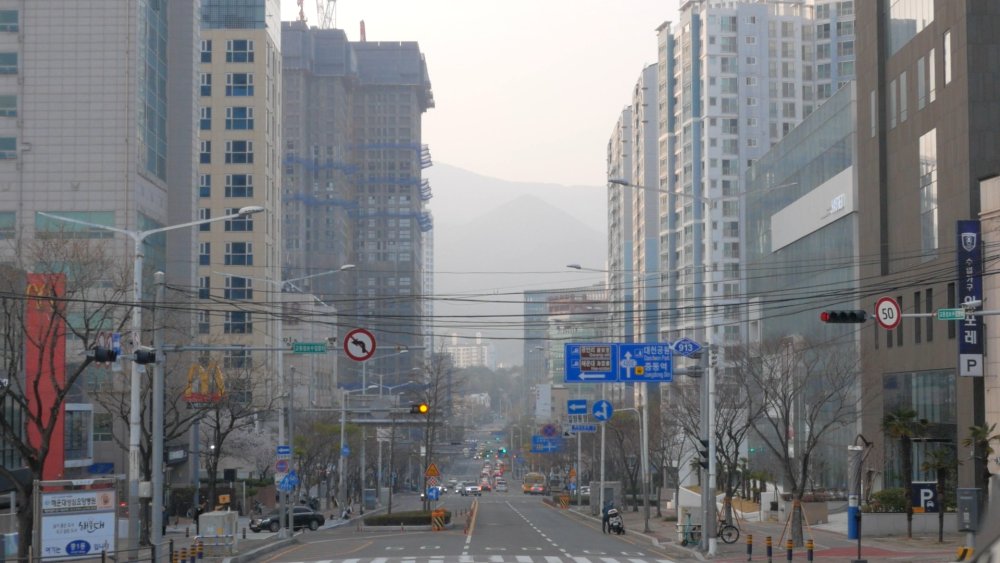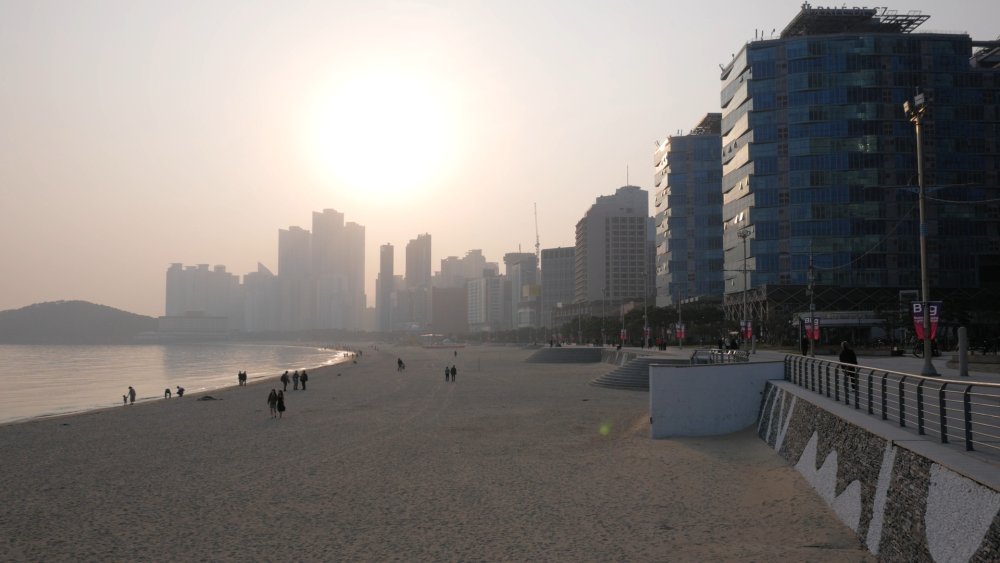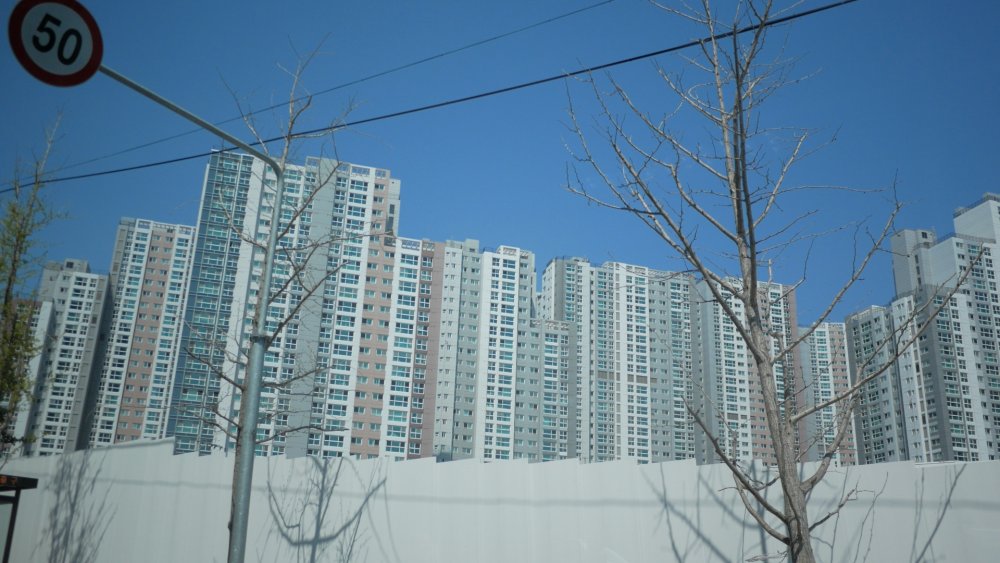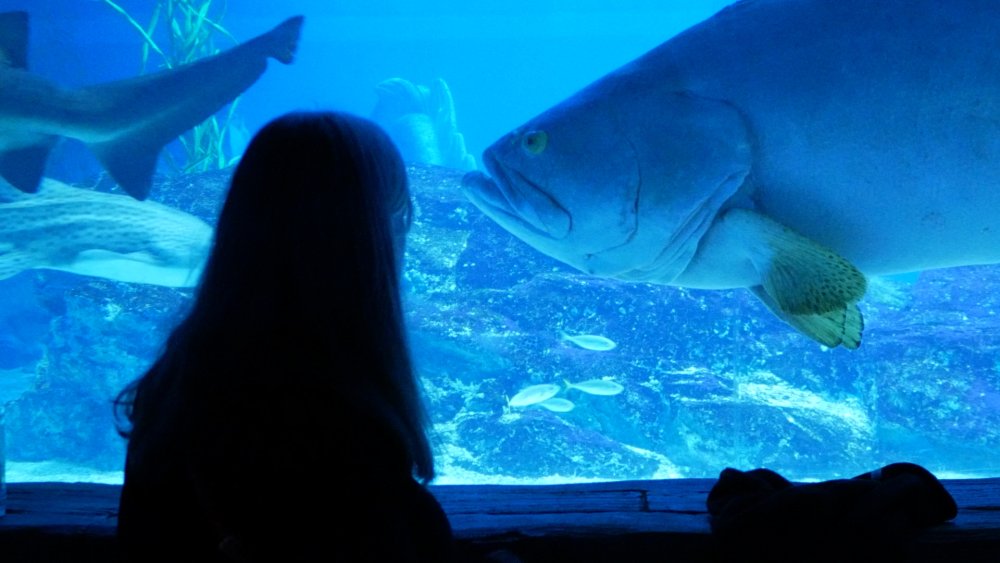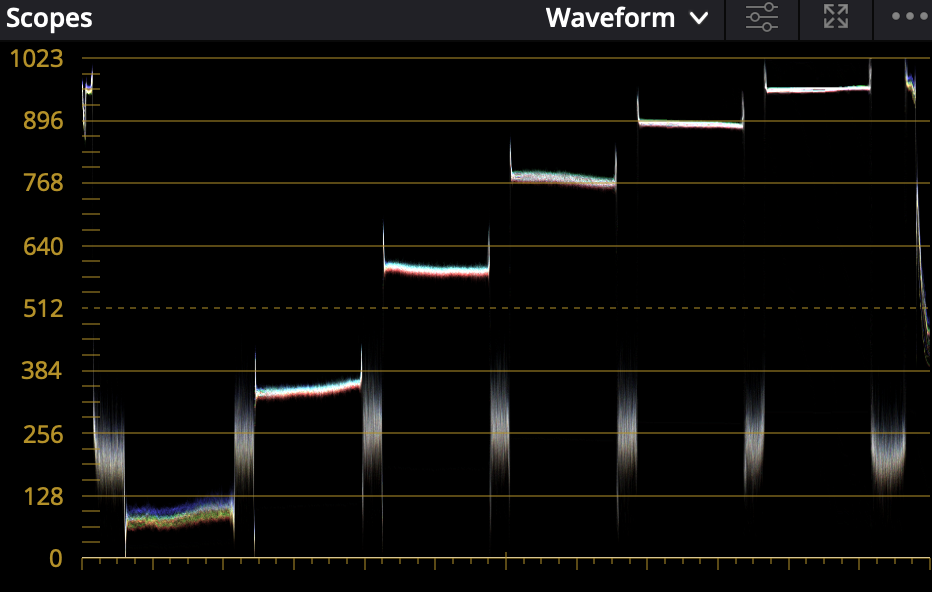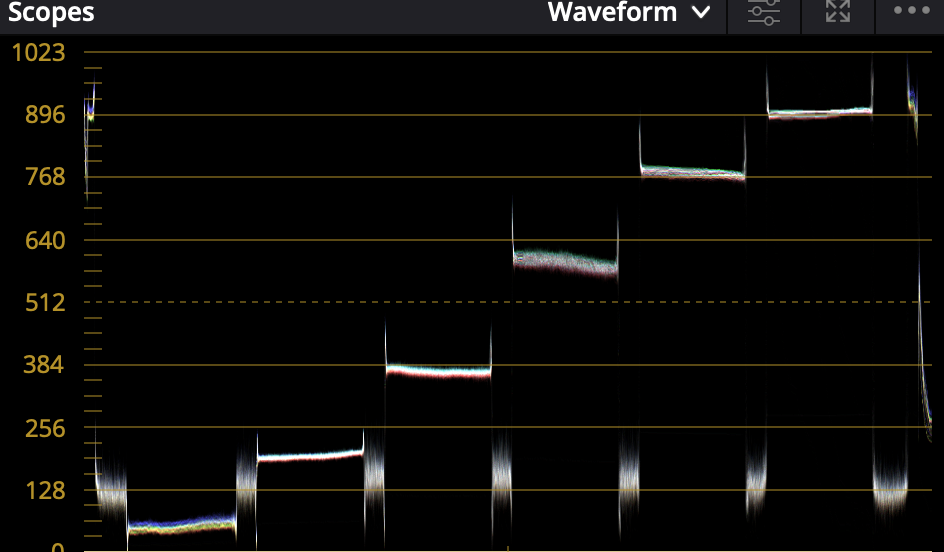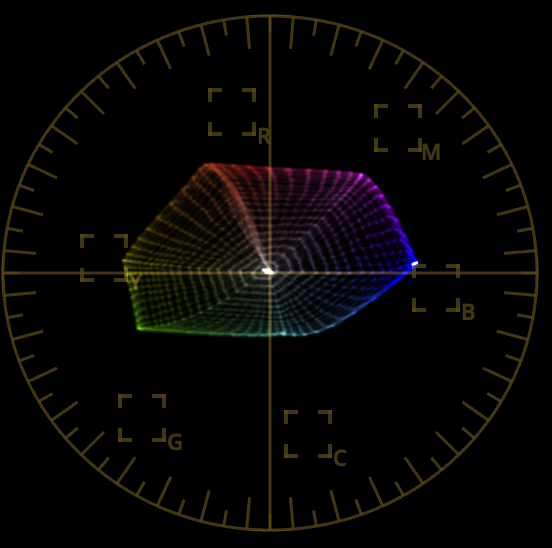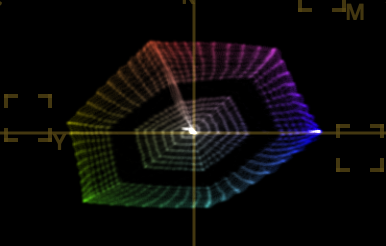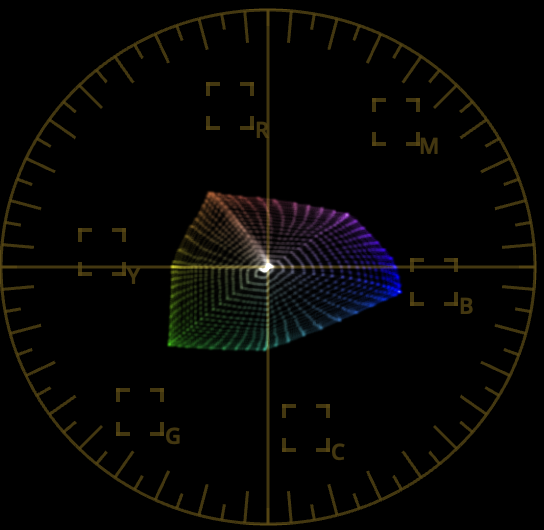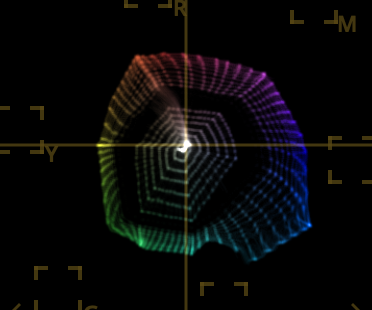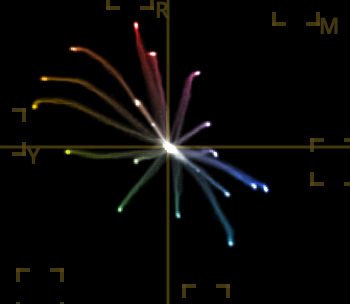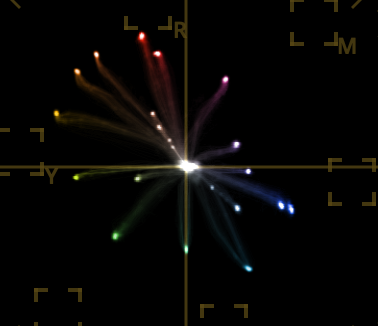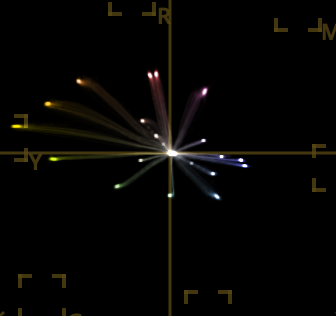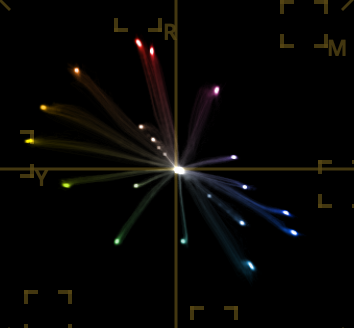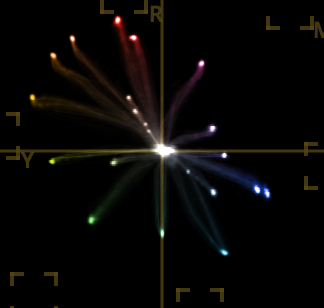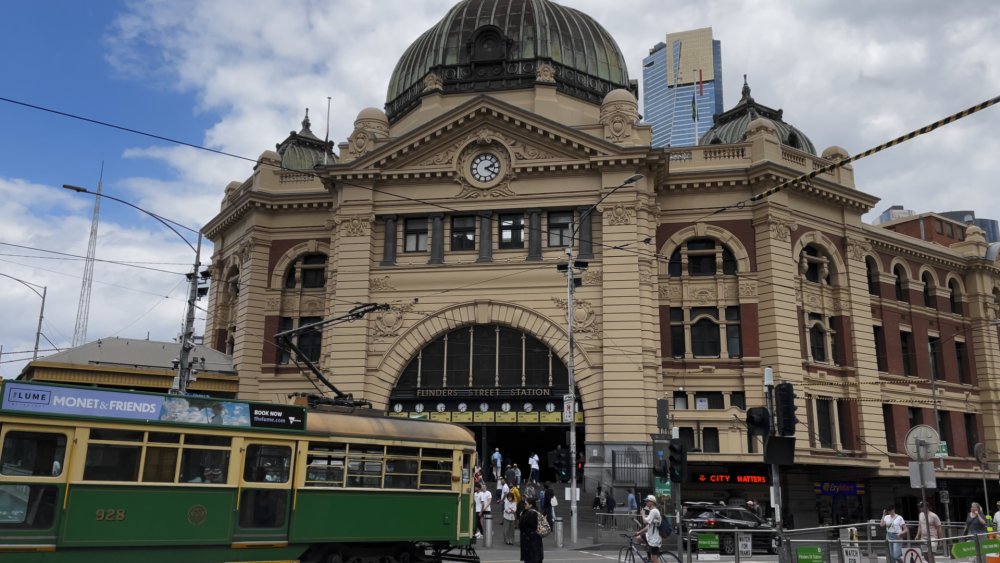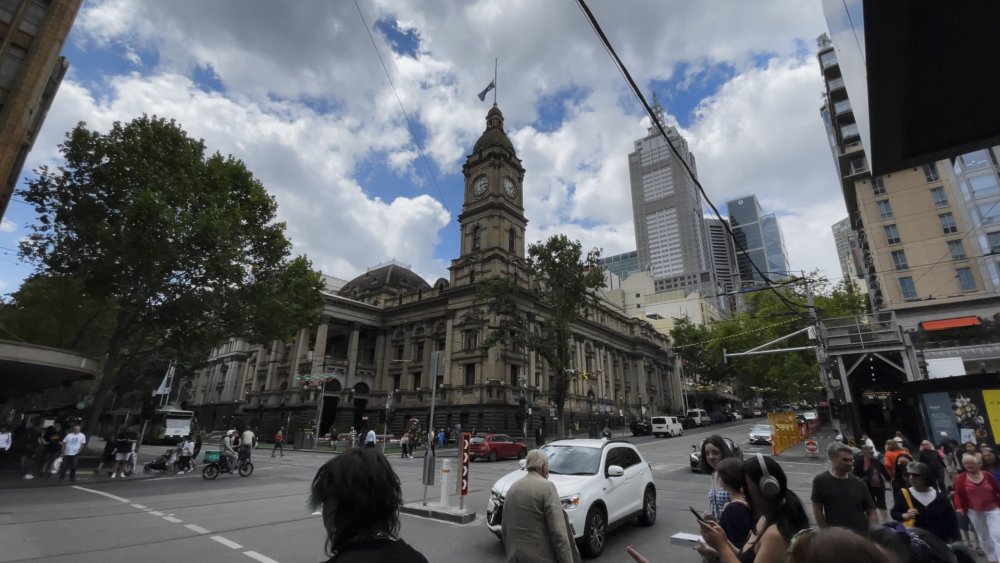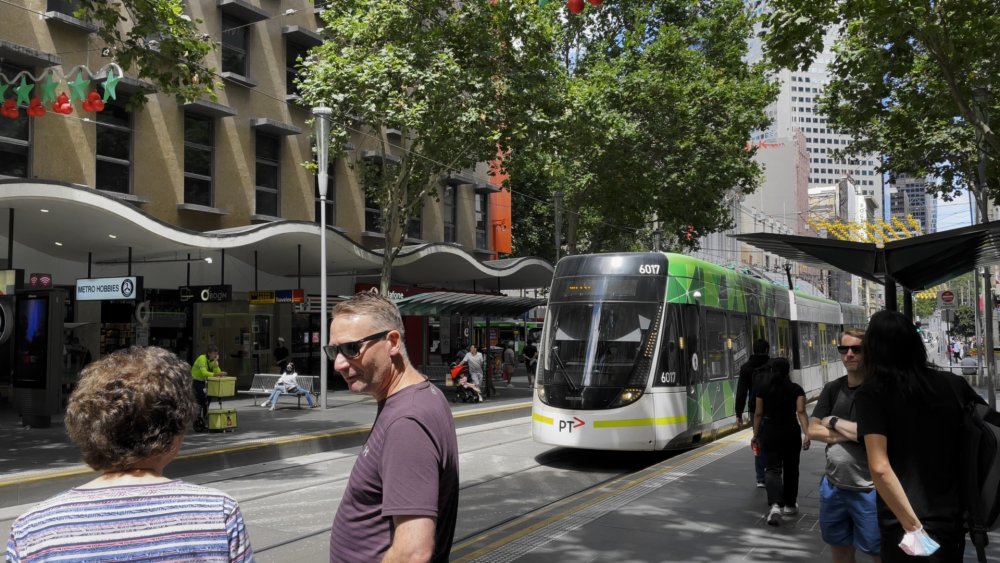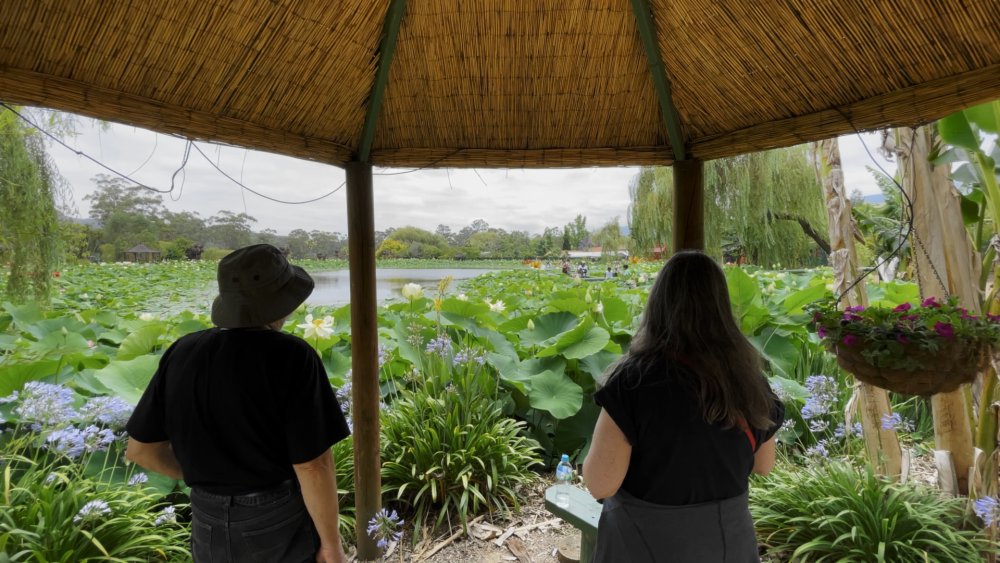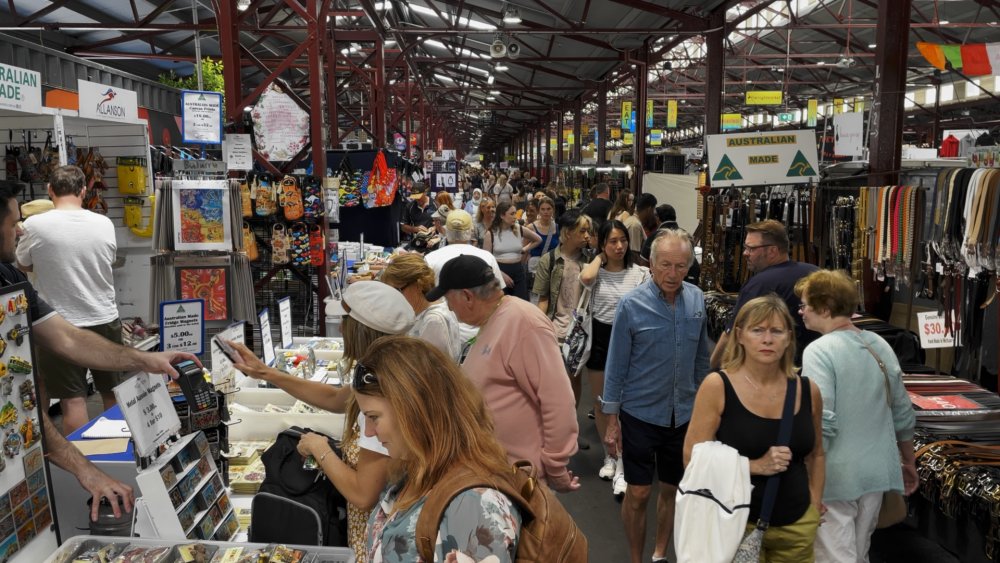-
Posts
8,028 -
Joined
-
Last visited
Content Type
Profiles
Forums
Articles
Everything posted by kye
-
I'm into the edit from my last trip. Putting everything on the timeline results in a 5h22m sequence. Resolve interprets still images as a single frame, so they aren't padding out the edit time. My first pass, where I pull in just the good bits of the clips got it down to 1h35m. The way I edit is to use markers to separate locations and sequences within a location, which lets me organise the footage (Resolve isn't great if you're shooting on multiple cameras without timecode, so things are often out-of-order). For example, we went to an aquarium and saw the otters getting fed, saw the sharks getting fed, etc. In a sense, each of these is like a little story, and for each one I have to establish the scene, then have some sort of progression in the sequence that addresses the "who was there", "what did they do", and "what happened" sort of questions. I've identified over 40 location markers and over 40 sequence markers within those locations. Some locations only had one sequence, but others were full day-trips and had a dozen seperate sequences. That's over 80 stories! My next steps are to work out which stories get cut completely, then to confirm the overall style of the edit. My challenge is always how to get from one location to another and establish the change. I typically shoot lots of clips when walking, on buses / trains / taxis, etc for this purpose. As it was South Korea, known for K-pop, K-dramas, and the super-Kute things (their reality TV has lots of overlays like question-marks when people are confused or exploding emojis when people are surprised), I'm contemplating a super-cute style with lots of overlays, perhaps using animated title-cards that show where we are and what we're doing. This would be an alternative style of establishing the location. I could even have little pics of who was there (sometimes the kids came with us and sometimes not). Then I'll identify the best shots from each sequence, which other shots are required to tell the story, and then cull the rest. Normally that shrinks the timeline significantly again.
-
It is a shame, but the fact that it's a 709-style profile seriously helps out the 8-bit. If it was an 8-bit log profile then you'd be stretching it for a 709 grade, but this isn't the case with these cameras. The iPhone is a 709-style profile and is 10-bit. That's (very-roughly) equivalent to a 12-bit log profile.. very nice! The more I use the GX85, the less I find it wanting TBH. In some ways this would be a good option, but I really really appreciate the smaller size of the 14mm and the 12-32mm (at least when it's not in-use). I found that I would "palm" the camera when carrying it around: This really helped me not attract un-due attention and protected the camera from bumps in crowds etc, but kept it at the ready when needed. I could do this with a longer lens but it makes it significantly larger, and makes pocketing it a lot more challenging. I wouldn't really miss the room range above 32mm, as that's 70.4mm FFequiv when combined with the 2.2x crop-factor of the GX85s 4K mode, when walking around, as I edit in 1080p and could punch-in to 141mm FFequiv. When I was using the 14mm f2.5 I punched in using the 2x digital-zoom all the time and didn't notice any loss of image quality at all. Maybe there would be a small loss in low-light but I never noticed it in the final footage where there wasn't a direct A/B. The GX85 only has a 1.1x crop into the sensor for the 4K mode, and the 1080p mode doesn't have any crop at all. I haven't really experimented with the 1080p modes TBH as I wanted the 100Mbps bitrate of the 4K mode. I do wonder how much would be supported if we had full access to all the modes supported by the chip. Obviously the chip in the GX85 can support being given a 4K read-out, can apply a colour profile and do whatever NR and sharpening is done to a 4K file, and can compress a 4K output file at 100Mbps. To imagine that it might be able to compress a 1080p image at 100Mbps isn't that far-fetched. Who knows what else might be available on the chip. ALL-I codecs, 10-bit, etc.
-
Nice edit. Simple, but mostly friction-free. The dialogue was free-flowing too, so perhaps the subject was relaxed and concise or you made some nice edits. Either way is a good thing, being able to interview properly is a skill I know I don't have!
-
With one-handed cameras are you now taking stills and video of the same moment simultaneously? I only do video but often feel the desire to be getting multiple FOVs simultaneously (beyond what the tech can do with cropping in post). Just a week ago I was on a pier at night taking shots of the waterfront buildings and their reflections in the water when the people just near me started letting off a small hand-held firework, which was juuuuuust too wide a shot to fit into the frame on the GX85 + 14mm combo I was shooting with (~30mm equivalent), so while continuing to record with the GX85 I pulled out my iPhone and tried to also capture the scene with that camera with my other hand. Naturally, I screwed up the iPhone footage and almost screwed up the GX85 shot too because I wasn't keeping the frame steady and it was already not fitting in the frame. I haven't found that file in post yet (I'm mostly through pulling selects from the 5h22m of footage from the trip), and I didn't review it that night because we were leaving the next day and I started to pack instead of taking time to review my dailies. When we're all shooting with 1000Mbps 8K cameras then I'll be able to put on a super-wide and then crop a 1080p frame for the normal and mild-tele in post, but until then I can't get all three from the same file.
-
Current totals and some very shallow analysis. Not much overlap between what is used and what is discussed, and not much respect for what people are actually using.
-
This leaves me with the best setup being either the iPhone by itself, or the iPhone + GX85 which means that the iPhone can do the wide and the GX85 can do the normal and tele FOVs. The 14mm is good when combined with the 2x digital zoom, but still lacks some flexibility. When I got home I put on the 12-35mm f2.8 zoom and while it's far more flexible, going a bit wider and hugely longer, the additional size puts it half-way to the size of the GH5 and severely hurts Priority 1 and 2. This left me with a choice: iPhone wide + GX85 + 14mm iPhone wide + GX85 + 12-32mm f3.5-5.6 iPhone wide + GX85 + 12-35mm f2.8 iPhone wide + GX85 + wide-zoom like 7-14mm or 8-18mm The question was if the iPhone wide camera was good enough in low-light. I reviewed my footage and basically it's good enough indoors in well-lit places like shops or public transit, good enough in well-lit exteriors like markets, but very very borderline in less-well-lit streets at night. For my purposes I'll live with it for the odd wide and will lean heavily on NR, which will give me the ability to have a longer lens on the GX85 which extends the effective range of the whole setup. I did a low-light test of the iPhone, GX85 and GH5 and found that the GH5 and GX85 have about the same low-light performance, iPhone normal camera is about GX85 at f2.8 and the iPhone wide is about GX85 at f8. Considering that iPhone-wide/f8 was very borderline, if I aim for something like f4 or better then the lens should be fast enough in most situations I find myself. I don't really find myself wanting shallower DOF than the 14mm f2.5, and could even have less without much downside. This means that the option of a zoom lens is not out of the question, and the 12-32mm pancake seems a very attractive option. It's larger than the 14mm when it's on and extended, but when it's off it's basically the same, and it would give a huge bump in functionality. I took a number of timelapses on the trip too, and having a zoom would make these much easier as well. I'm contemplating the 45-150mm as well, but we'll see.
-
The last is the GH5. Firstly, it's noticeably larger than the GX85, so much so that it's not pocketable (despite what BM might claim) so it's less convenient to transport, and it's not "palm-able" either so you're walking around obviously holding a professionally-sized camera, regardless of what lens you use. I tried taking it out with the 14mm lens one day instead of the GX85 and I found it more cumbersome to carry, more conspicuous to passers-by, and even subtly more imposing on my family. When I accidentally found myself carrying it through anti-government protests (long story) I was thankful that the riot police weren't looking for anyone that looked like foreign media. I typically pair it with manual-focus lenses, and found this to be quite cumbersome compared to the AF of the 14mm lens, but with faster lenses you need to worry about what it will focus on, so it's a whole other ballgame which even the animal-eye-AF cameras get wrong because they don't know which cat you love the most. While the EVF is reasonable, but not great, the screen is cumbersome to use unless you're shooting from eye-level as you need to flip it out to be able to tilt it, not only making the camera a lot bigger (physically and perceptually to everyone) but also less manoeuvrable and more fragile if you get bumped etc. Obviously the image is the nicest out of all three cameras, but you really pay for it in size and weight. For Priority 1 and 2 it's definitely the last-resort, and I'd only pick it over the GX85 in very specific circumstances now.
-
The GX85 is the next challenge. For Priority 1 it needs to be kept handy and accessible. This means either being kept in-the-hand or kept in a pocket - keeping it in a bag adds access time unless the bag is on the front of my chest. Both of these mean that the rig has to be kept as small as possible, which essentially boils down to lens choice. The 14mm f2.5 lens is an absolute gem in this regard. In the 4K mode (which has a 10% crop into the sensor) it's got a 30.8mm equivalent FOV. I edit and deliver in 1080p, like all sensible people in the real world who haven't confused their ass for their elbow do, and so I can also use the 2x digital crop feature, which gives a 61.6mm equivalent FOV. These two FOVs are hugely handy for showing people interacting with the environment around them - environmental portraits. It also has good low-light, good close-focus distance, and has a bit of background defocus if the subject is close. I have the GX85 configured with back-button focus. This means that I hold down a button on the back when I want to engage AF and hitting the shutter button doesn't engage it. This works brilliantly in practice as it means that I can focus once for a scene and then shoot without having to wait for the camera to AF. I also have the viewfinder set to B&W and have focus peaking enabled in red, making it easily visible. The histogram is also really handy to know what is going on too. For Priority 2, this setup works well - the tilt-screen is great, AF is super-fast, IBIS is impressive and very functional, and I find using it in real-world situations to be easy, fast, and very low-friction. It still gets some attention, but it's not excessive. I find that for most shots I want to stop down to ensure that everything is in focus. This is because my work is about the subjects experiencing the location and the interactions that are going on. A nice portrait with a blurred-beyond-recognition serves very little purpose as it could have been shot anywhere at any time and therefore has no relevance. This lens can give a satisfying amount of background defocus for mid-shots if required, and especially for macro shots, which are occasionally relevant in an edit. Here are a few grabs SOOC. In grading I would typically lower the shadows to the point where the contrast is consistent (assuming it makes sense for the scene - lots of these have haze which you have to treat differently) and I would even out the levels of saturation etc. I'd also sharpen or soften images to even out the perceptual sharpness too. Interestingly enough, most of these images have enough DR, and even have elevated shadows, despite the camera not having a log profile. These provide a really solid foundation to grade from.
-
So, where does this leave us? Well, the iPhone wins Priority 1 hands down - so many people are vlogging or whatever in public now that it's almost invisible and I feel very little friction in using it. It's always handy in an easily accessible pocket, and the camera is fast to use from the lock screen. Once you're in the app it changes FOVs almost instantaneously, and will even change camera while recording, so that's hugely usable too. It's also pretty amazing at Priority 2. The stabilisation is simply incredible - I do the ninja walk pretty badly but it manages to give practically perfectly stable images even when walking on stairs etc. The AF is also fast and reliable, and because it has a very deep DOF it doesn't have the problem of choosing the wrong thing to focus on. It's got a large screen that is pretty easy to see in full-sun, even if you're trying to get a high or low angle and aren't looking straight at the screen.
-
I've gone through a journey over the last few months, and have come to a new clarity in my work. As most know, I shoot video of my family but want to make it look as much like high-end TV and films as possible. This involves shooting in completely uncontrolled situations with no re-takes. My new found clarity is this. Priority 1: Get the shot You can't use the shots you didn't get. Priority 2: Get shots in the best way Shots that aren't in focus, are shaky, don't have good composition etc aren't optimal. Also, having shots where subjects are aware and nervous of the camera, people in the background are staring at the camera, etc are also not optimal. Priority 4: Get the nicest image quality Insert all the normal camera stuff here... DR, colour science, etc. No, I didn't mis-number this, it's priority 4 because it's so far away from priority 1 & 2 that there is no Priority 3. Priority 1 is about feeling comfortable pulling out the camera and shooting, and having it be easy and fast to use. No fuss. Priority 2 is about stabilisation and focus, but is also about camera size. Smaller is better. This means that iPhone > GX85 > GH5, but unfortunately for priority 4 it's the opposite. Overriding principle: Use the biggest camera that won't draw too much attention in the situation. My first challenge was to see if using the iPhone was going to even be feasible. I mean, the image quality that I saw from it was horrendous. @mercer laughed when I called it "MAXIMUM AWESOME BRO BANGER FOR THE 'GRAM" but it was potentially the most savage insult I could think of - and the way to make images look as cheap and amateurish as possible. I own the iPhone 12 mini, which has the normal and wide cameras, but not the tele. One thing that escaped even my attention was that this has HDR and 10-bit support natively, so it's got at least some potential. Long story short, I filmed a test scene with all three cameras, as well as a colour chart I made in Resolve and a colour checker and attempted to match them. Matching to the GH5 was obviously not feasible, but I like the GX85 so I matched to that. Matching the GH5 to the GX85 was as simple as making a few basic adjustments. Then came the iPhone.... I tried matching the scenes first, with limited success. Hues and saturation and Luma behaviour were clearly different and not in easy or nice ways. That's when I turned to the colour chart and tried to look at what was going on. At first, the iPhone vector-scope was horrifically tangled, but in a stroke of luck I noticed that the luma curve was pushed up to brighten the mids, and when I brought it back to being linear, the vector-scope immediately fixed itself and was stunningly plain and straight-forwards. Win! This is the before/after of the greyscale from the colour chart: While this isn't a perfect linearisation, check out this before/after of what it does to the vector-scope from my Hue vs Sat test pattern in Resolve.... (I'd removed a few rows in the mildly-saturated region so I could more easily compare between cameras. This is the GH5 in HLG without a conversion to 709 for comparison) If I apply a CST to the GH5 (from rec2100 to rec709) and include saturation compression, we get this horrific thing: I've used that CST technique in the past and it's been fine on real footage, so it's not as bad as it looks. But the moral of the story is that the iPhone now has easily manageable colours. I was absolutely stunned when I realised that grading the iPhone footage could be as easy as working with the GH5 footage. Plus, it's 709 footage in 10-bit, so it should be prone to less banding and artefacts than the GH5 footage, which is 10-bit log. Next step is to use the colour checker to match the hues and saturation levels of the GX85. Here are the vector-scopes before matching.. GX85: GH5: iPhone with curve: Obviously the iPhone is nothing like the others, which is what you'd expect - Apple gave it a very distinct look and it's very different to the Panasonics. I also took shots of the colour checker in -3 stops and +3 stops. This showed that on the underexposed image (-3 stops) the iPhone is less saturated than the GX85/GH5 and on the overexposed image (+3 stops) the iPhone is more saturated. Resolve has a curve for this. I couldn't match it completely as it required a brutal adjustment but I pushed it in the right general direction. After applying some hue and saturation adjustments, we get quite a good match. iPhone: The plots at -3 match well, but the plots at +3 are all over the place, with the GH5 clearly having some rather strange issues. I'll ignore these for now - the goal is to make the iPhone into a camera that can be used for filming more than just memes, it doesn't have to match perfectly. I also applied a gaussian blur to the footage to un-do the horrendous sharpening that is applied. Here are some sample images from a recent trip with the above adjustments applied, without even adjusting each image individually - this is just the starting point. As I shoot auto-WB I'd be adjusting each image individually, main focusing on skin-tones. It should also be noted that these adjustments apply equally well to the normal, wide, and selfie cameras, and also apply to the 1080p120 and 1080p240 modes from both the wide and normal cameras. These shots include a mix of these. It looks like a real camera to me! Not the best in the world, but it doesn't make me regret shooting with it, so firmly in the usable category.
-
I'm curious to know what cameras people are actually using? By reading the forums I get the impression that everyone is using the latest and (so called) greatest cameras, but I suspect that's not the case. I haven't been posting lately because I've gotten the impression that no-one would be interested unless I was pixel-peeing a Z9 or whatever, and I've moved past that now.
-
Well, if I can't talk about cameras I haven't used, don't get to join the discussion even if I bring facts, and can't talk about the ones I do have, I guess you're banning me from having any involvement at all? I mean, you are the internet police, right?
-
After my own experience learning video after being a stills shooter, and reading many threads on photography sites talking about learning video, I'm not surprised that there hasn't been a huge migration from stills to doing both. ...and considering the level of skill and speed required at weddings, I would imagine that would make such a transition even more daunting for those contemplating such a thing! TBH though, the biggest challenge that I saw online from stills photogs was that they simply weren't willing to try. Even when someone who had developed some video skills gave simple advice about how to start, most wouldn't even do it, despite how simple the assignment was. Combined with the mass layoffs of photogs from newspapers and magazines that was occurring at that time, I got the sense that most had just given up on trying to adapt and stay relevant.
-
Do you have trouble comparing objects in photographs? I would have thought it was pretty straight forwards, but maybe not for everyone. ......but maybe those photos are somehow lying! Let's see, the C100 is ~1020g, and: Approx 135 x 170 x 129mm (thumbrest attached); => this is about 3L in volume Approx 182 x 170 x 129mm (grip attached); => this is about 4L in volume My 700D is ~580g, and: 133.1 x 99.8 x 78.8 mm => this is about 1L in volume So, the C100 with thumb rest is: Almost identical in width 1.7x taller 1.63x deeper about 3x as large in volume (however the C100 is quite curved, so this is much more subjective than the other measures) In terms of my 700D, I shot with it for years, and it is quite similar in size to my GH5 and XC10 once setup. I have shot many thousands of clips and tens of thousands of photographs across dozens of countries across many continents with those setups. Those cameras are not small. and yet, I am expected to believe that a camera 1.7x taller and 1.63x deeper is somehow TINY. Please.... Well said, however you have perhaps underestimated the attention that you get when you have a camera even the size of a GH5. Remember that a 5D is universally recognised practically the world over as being as professional a camera as you can get, and it's not so much larger than a GH5. Of course, the discussion wasn't about what was palatable in public, it was on camera size, and when I made a simple remark about an absolute statement, for some reason instead of clarifying, our friend just doubled down on an absolute statement, and then tried to make it personal.
-
No. I looked at a bunch of pictures online that showed both the C100 as well as various other DSLR bodies and saw that the C100 was around the same size as other cameras that I knew to be large through my own experience. I know everything is relative, but if someone says "I drive a large sedan and I'm looking at the Tesla truck" replying with "the Tesla truck is tiny!" because the Tesla truck is a truck and you're now comparing it to a triple road train then it's still not really in context.
-
That vlog life tho...
-
I've seen this a lot on camera comparisons. Two images look like they have a different WB, but when you compare them the neutral greys are both neutral but there will be different tints with the highlights/shadows or on hues that are beyond a certain level of saturation. It makes looking and comparing images very confusing - they look different but sensible adjustments don't seem to be effective in making them match. The good thing with the FP is (I assume) you can CST back to a neutral point and then apply whatever colour science you want, side-stepping any oddities from a particular colour science or other.
-
Hey - you've got to be careful saying crazy things like that around here... I'm reliably informed that the C100 is practically microscopic!
-
Wow, that's definitely a neat setup!
-
All I'm seeing is that it won't be that expensive to get into!
-
Ah, that makes more sense. For some reason I was imagining the little electronic EVF accessory (EVF-11) and wondering how that worked! Yes, that is quite a neat package if that suits your shooting style 🙂
-
Are you able to share a photo of the rig with the SD on top of the EVF? I'm curious as rig size is important for me.
-
You have proven my point - they're huge cameras!! The C100 is tiny.... for a cinema camera... but it's not tiny... as a camera. If someone says "what cameras would you say are tiny?" your answer is much more likely to include GoPro or GX85 or maybe a 360 camera, but you'd be crazy to say "the C100!". The context of the conversation is Nikon Z6 - and the C100 isn't remotely tiny in that context.
-
Kids these days.... they can barely spell! In that case, let me talk about if you should buy a GH5 instead of an FX30...... don't.
-
If you're concerned about breathing then it's worth mentioning that Sony have lens breathing compensation built into some of their newer bodies. The lenses still breathe, but the camera knows their 'profile' and crops into the image a small amount and as the lens changes focus the camera adjusts the digital zoom to keep a perfect frame and eliminate the focus breathing. In the tests I've seen the results are absolutely perfect and it's one of those things that I didn't think I cared about much until I saw images where it was eliminated and you see how much of an improvement it is to have it gone. I think that unless you have a huge amount of money to spend on lenses then you'd be better off going for a system like this that adjusts digitally rather than paying a lot for a lens without much breathing, as I'd imagine those are likely to be more expensive cine lenses. Happy to be proven wrong, but the Sony compensation seem to do a great job. Sony AF is also very impressive so you wouldn't be compromising there either.




